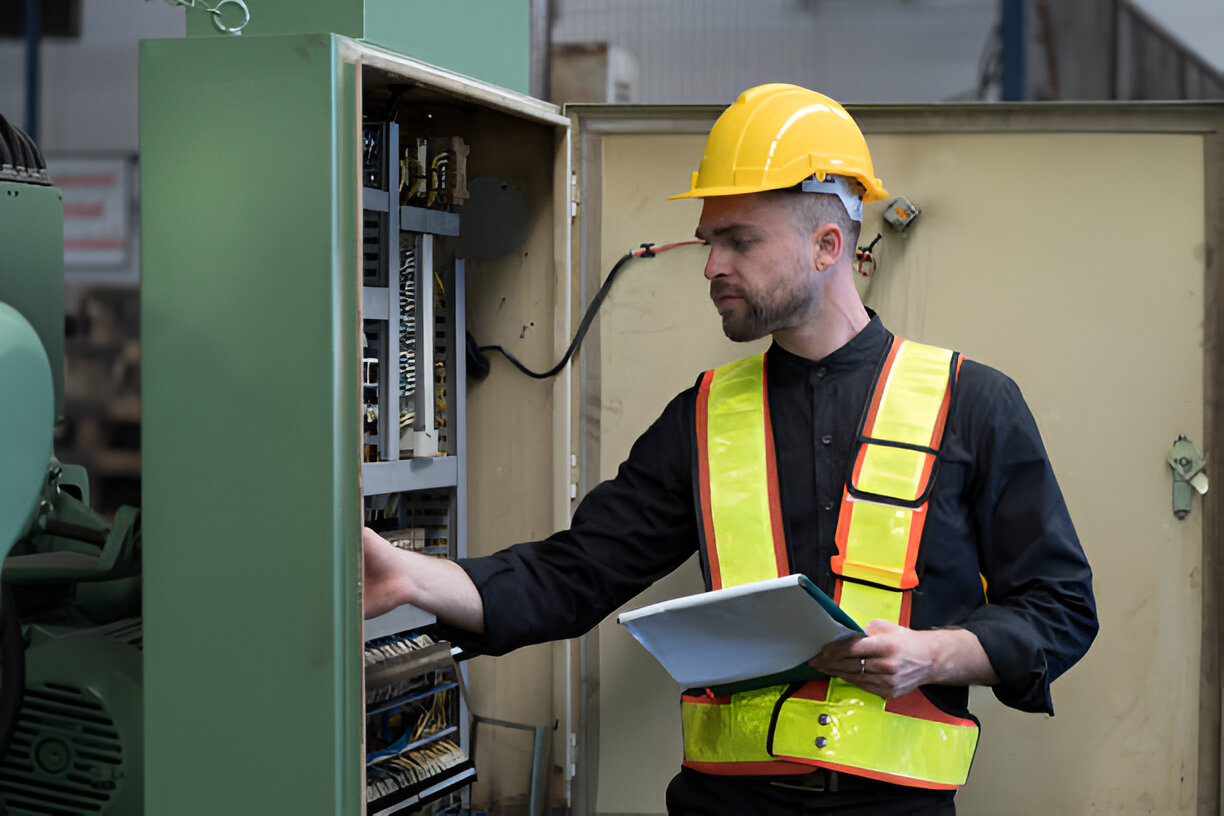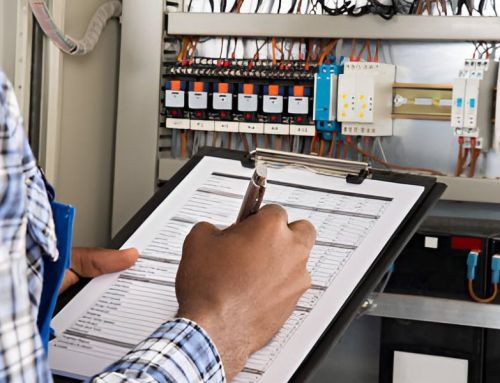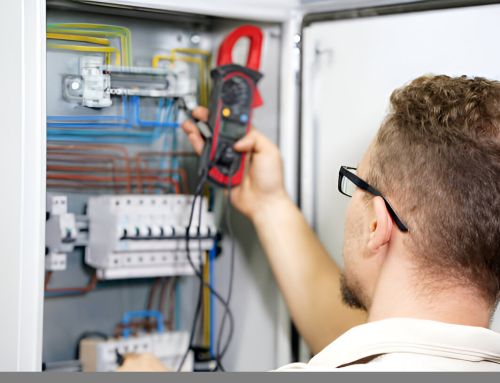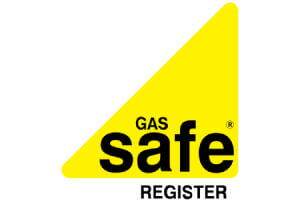
As London’s regulatory framework continues to evolve, one significant aspect that property owners must consider is the mandatory Electrical Installation Condition Report (EICR). Required for both residential and commercial properties, the EICR is a critical document that assesses the safety of electrical systems. For residential properties, these assessments must be carried out every five years or whenever there is a change in tenancy. Commercial properties, on the other hand, fall under the stringent directives of the Electricity at Work Regulations 1989. Understanding the nuances of these requirements is essential, especially when considering the severe penalties for non-compliance. Let’s understand Is an EICR Mandatory for Residential and Commercial Properties in London?
What is an EICR and Why is It Important for Property Safety?
An Electrical Installation Condition Report (EICR) is an essential document that assesses the safety of electrical systems within residential and commercial properties. This inspection report meticulously evaluates the adequacy of earthing and bonding, identifies any deterioration, defects, or non-compliance with the prevailing wiring standards that might compromise safety, and provides a clear schedule of circuits, often missing in older installations.

The importance of an EICR cannot be overstated. It serves not only as a preventative measure but also as a crucial document in ensuring properties’ compliance with the latest electrical safety standards.
Failure to obtain an EICR can expose property owners and managers to significant legal liabilities, particularly in the event of an electrical accident that could have been preempted by such a report.
Beyond compliance, the EICR serves a functional purpose by enabling property owners to understand the current state of electrical installations, thereby facilitating informed decisions on maintenance or upgrades needed to ensure safety and efficacy.
It offers peace of mind by delineating potential electrical risks, ensuring that all electrical installations function optimally and adhere to stringent safety norms.
EICR Requirements for Residential Properties in London: A Legal Overview
In London, the legal requirements for Electrical Installation Condition Reports (EICR) in residential properties are stringently defined to ensure the safety and compliance of electrical installations.
Landlords must ensure that EICRs are conducted every five years or with the change of tenancy, whichever comes first. These regulations, stipulated under the Electrical Safety Standards in the Private Rented Sector (England) Regulations 2020, mandate a thorough inspection and testing of all fixed electrical parts, such as wiring, plug sockets, light fittings, and the fuse box by a qualified electrician.

The EICR must identify any defects categorized under codes C1 (‘danger present’), C2 (‘potentially dangerous’), and C3 (‘improvement recommended’).
Landlords are legally obligated to resolve any C1 and C2 issues within 28 days or less, depending on the immediacy of the risk posed. Compliance with these codes ensures that the electrical systems do not pose a threat to tenants and are in inadequate operational condition.
Failure to comply with these safety regulations can result in substantial fines or legal action by local authorities.
Therefore, adherence to EICR requirements is not only a legal duty but a critical measure to safeguard the welfare of tenants and maintain property integrity.
Are Commercial Properties in London Required to Have an EICR?
Like their residential counterparts, commercial properties in London are also subject to mandatory Electrical Installation Condition Reports (EICR). This legal requirement ensures that electrical systems within commercial buildings are not only efficient but also safe for continuous use. The obligation to conduct an EICR in commercial settings is grounded in the Electricity at Work Regulations 1989, which emphasize the prevention of electrical hazards that could lead to accidents or fatalities.
The following table outlines key aspects that govern the EICR process for commercial properties in London:
| Aspect | Details |
|---|---|
| Regulatory Body | Health and Safety Executive (HSE) |
| Legislation | Electricity at Work Regulations 1989 |
| Purpose | Ensuring electrical safety and compliance |
| Scope | All fixed electrical systems and equipment |
| Enforcement | Local authorities and regulatory inspections |
Compliance with these regulations is not merely a bureaucratic formality but a critical measure to mitigate risks associated with electrical systems. The meticulous inspection covers all aspects of a property’s electrical infrastructure, including wiring, socket outlets, light fittings, and other components. Non-compliance can lead to severe legal repercussions, including fines and enforced closures. Thus, ensuring an up-to-date EICR is crucial for all London commercial property owners and managers.
How Often Should an EICR Be Conducted for Residential and Commercial Properties?
To ensure ongoing compliance with electrical safety standards, the frequency of Electrical Installation Condition Reports (EICR) for residential and commercial properties varies. The guidelines are primarily shaped by the type of property, its usage, and the inherent risks associated with electrical systems. Property owners and managers must adhere to recommended intervals to ensure safety and regulatory compliance.
- Residential Properties: For rental properties, including houses in multiple occupation (HMOs), it is mandatory to have an EICR conducted every 5 years or with each change of tenancy, whichever comes first.
Homeowners are advised, though not legally required, to schedule an EICR every 10 years.
- Commercial Properties: Offices, retail spaces, and other commercial entities should have an EICR executed every 5 years.
However, more frequent checks, typically every 3 years, are recommended for industries involving higher risks or heavy electrical equipment.
- Educational Institutions: Schools and colleges are advised to have an EICR every 5 years due to their extensive usage and the vulnerability of the population using the buildings.
- Public Use Facilities: Locations like hospitals, cinemas, and restaurants, where public safety is paramount, should ideally undergo electrical inspections more frequently, generally every 1 to 3 years depending on the specific conditions and local regulations.
Consequences of Non-Compliance: What Happens If You Don’t Have an EICR?
Understanding the required frequency and compliance with Electrical Installation Condition Reports (EICR) sets a foundation for electrical safety. Non-compliance can result in severe consequences that extend beyond mere legal repercussions. Property owners and managers in London should be acutely aware of the ramifications which include legal penalties, increased risk of electrical accidents, and potential invalidation of insurance claims.

Here is an overview of the consequences structured in a table format for clarity:
| Consequence | Description | Impact |
|---|---|---|
| Legal Penalties | Fines or prosecution due to non-adherence to safety norms | Financial and reputational loss |
| Increased Accident Risk | Higher likelihood of electrical failures and hazards | Safety risk to occupants |
| Insurance Claim Issues | Possible denial of insurance claims post-accident | Financial burden on the owner |
Failure to obtain or renew an EICR can expose property owners to significant financial strains and legal liabilities. It is crucial to understand that these reports are not merely administrative formalities but are vital for ensuring the ongoing safety and compliance of the electrical installations within a property. Thus, maintaining up-to-date EICRs is essential for both protecting the inhabitants of a property and safeguarding the property owner’s investment and compliance status.
Conclusion
In conclusion, adherence to Electrical Installation Condition Report (EICR) regulations is crucial for ensuring electrical safety in both residential and commercial properties in London. Mandatory evaluations every five years, or upon tenant transition for residential properties, and stringent adherence for commercial entities under the Electricity at Work Regulations 1989, are essential. Non-compliance not only risks penalties but also compromises safety. Thus, regular and rigorous EICR assessments are imperative for maintaining electrical standards and ensuring occupant safety.
Our Pricing
| Our Electrical Safety Certificate Prices |
|---|
| Studio Apartment £67.99 |
| 1 – 3 Bedroom £94.99 |
| 4 Bedroom £104.99 |
| 5 Bedroom £139.99 |
Check Out Our Other Services
| EICR | Commercial EICR | Emergency Light Certificate |
|---|---|---|
| Electrical Diagnostic | PAT Testing | Fuse Box Installation |
About the Author: LandlordCertificate
Related Posts
Get Social
Recent Posts
- Domestic Fire Alarm Installation: Protecting Your Home and Family with Reliable Fire Safety Systems
- Asbestos Management Survey Report: Complete Guide for Property Owners and Duty Holders
- Emergency Lighting Test Certificate: A Complete Guide for UK Properties in 2025
- Portable Appliance Testing Cost in 2025: Everything You Need to Know
- Energy Performance Certificate Requirements Explained for 2025













